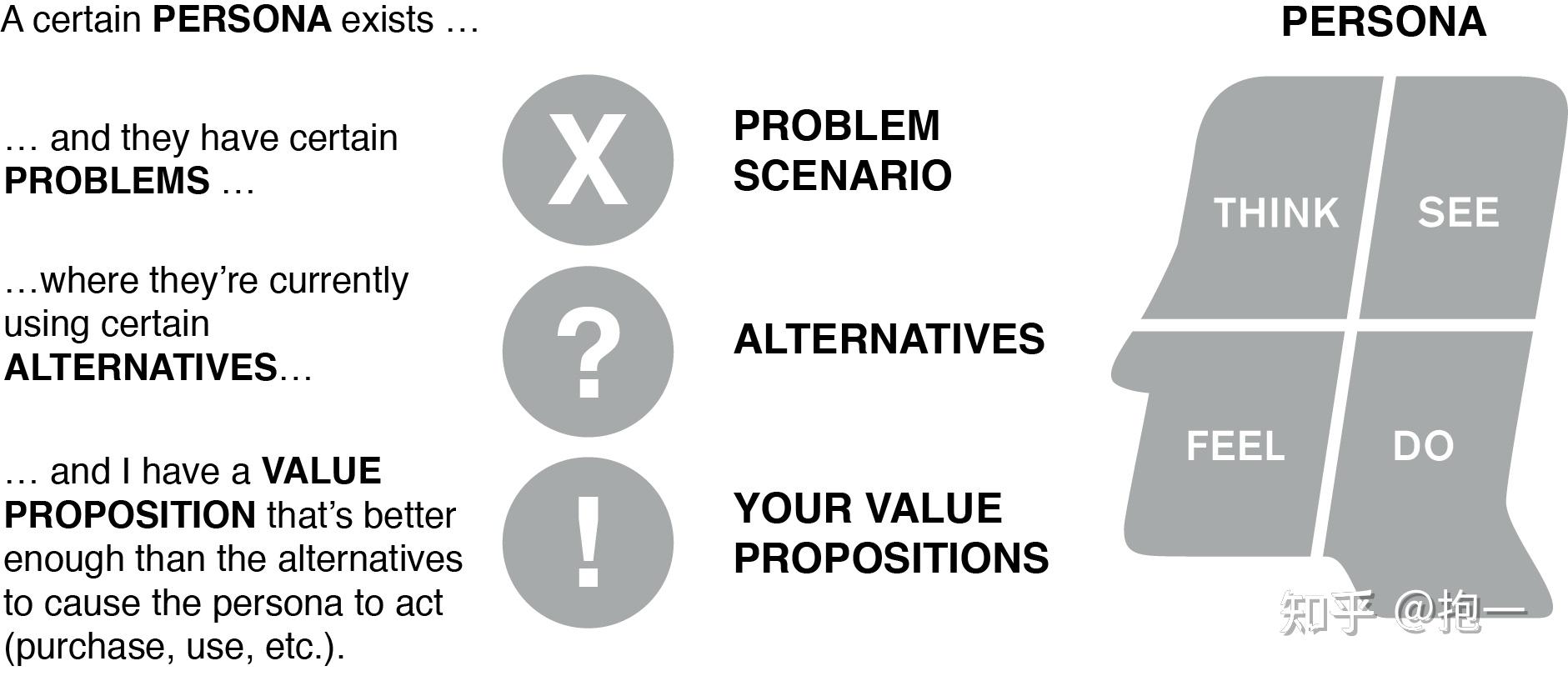产品学习笔记-问题场景和替代方案PROBLEM SCENARIOS & ALTERNATIVES
时间: 2021-08-02 17:26:29 | 作者:抱一 | 来源: 喜蛋文章网 | 编辑: admin | 阅读: 99次
- 2023-11-24 11:00:14写好读书笔记对写作有哪些帮助
- 2023-11-09 01:01:18读书笔记的摘要和主要内容概述的区别
- 2023-10-30 19:00:44读书笔记对于阅读的重要性体现在哪里
- 2023-10-18 13:00:23用平板做读书笔记,推荐哪个软件
- 2023-09-20 11:00:39读书笔记就是摘抄句子吗
- 2023-08-29 17:01:33写读书笔记可以抄正在学的课文吗
- 2023-08-03 11:01:44你对读书笔记或者日记这种手写文字有怎样的认知 是不是和我一样有一种戒不掉的隐 你知道为什么么
- 2023-07-14 19:00:23如何写读书笔记,
- 2023-06-30 23:00:14如何教三年级学生学会写读书笔记
- 2023-06-29 12:01:30怎样引导孩子写读书笔记的感悟思考

疑问
- 用户需求与产品需求的关系?问题场景Problem Scenario和用户故事的关系?下面测试表格中Onboarding和Engagement是导入和应用的意思吗?
思维导图


学习成果
After reading this tutorial and engaging with the related practice you will be able to:
- Take new ideas and frame them in terms of an objectively testable customer needOperationalize your ideas on value propositions with a before and after storyboardConduct customer discovery to refine and test your ideas on customer needs
学习笔记
Problem Scenarios are where you identify specific objectives for your product. They may be tasks, habits, or desires that you’ll deliver against. These should be real and observable, hence the emphasis on ‘alternatives’: if these problem scenarios exist, the customer is doing something about them now. It’s important you understand those alternatives- your proposition will need to be better.
WHAT? Testable definitions of desires, jobs to be done.
WHEN? Whenever you need to know why customers would care.
WHY? If no one cares, no one buys.


The basic idea is that by focusing on a customer’s fundamental problems/needs (which rarely change) instead of solutions (which change a lot), your company remains anchored in a foundation that’s highly durable yet innovation-friendly.
Leaving Where Your Are, Going Where the Customer Is
I like to organize needfinding around three key elements: 1) problem scenarios 2) alternatives and 3) value propositions.


Only after you have a working view on the relevance of problem scenarios and an understanding of current alternatives would I recommend evaluating value propositions.
our key question around these problem scenario-alternative-value proposition trios is: How much better is my value proposition than the current alternative(s)? Is it ‘better enough’ that the customer’s going to buy or use my product?
In fact, you can roll all this into a testable formulation I like to call the ‘product hypothesis’ (though if could also apply to an individual feature) as follows:


Designing Testable Propositions
Once you’ve identified pairings of problem-scenarios and value propositions, I recommend drafting pivotal metrics to focus your discovery and testing. This will allow you to pair your qualitative hypotheses with quantitative evidence to focus your work and drive to informed, confident decisions. You may have testing you want to do earlier or later in the customer journey (ex: acquisition before or referral later), but for the core product design, I recommend the following breakdown: onboarding, engagement, and outcomes.
The following table summarizes the questions teams should answer as they test their value proposition relative to a target PS/JTBD.
| Item | Onboarding | Engagement | Outcome |
| What does this mean? | |||
| What is the interval? | |||
| How might we test this? | |||
| What are the metrics? | |||
| What’s tricky? What do we need to watch? |
Interviewing Subjects to Discover and Test Problem Scenarios


Going Deep: Storyboarding a Before & After Scenario
With this format, we push ourselves to make communicate better and make sure we’ve really thought through our problem scenario as a testable hypothesis.
[产品学习笔记-问题场景和替代方案PROBLEM SCENARIOS & ALTERNATIVES] 相关文章推荐:
- 最新读后感
- 热门读后感
- 热门文章标签
全站搜索